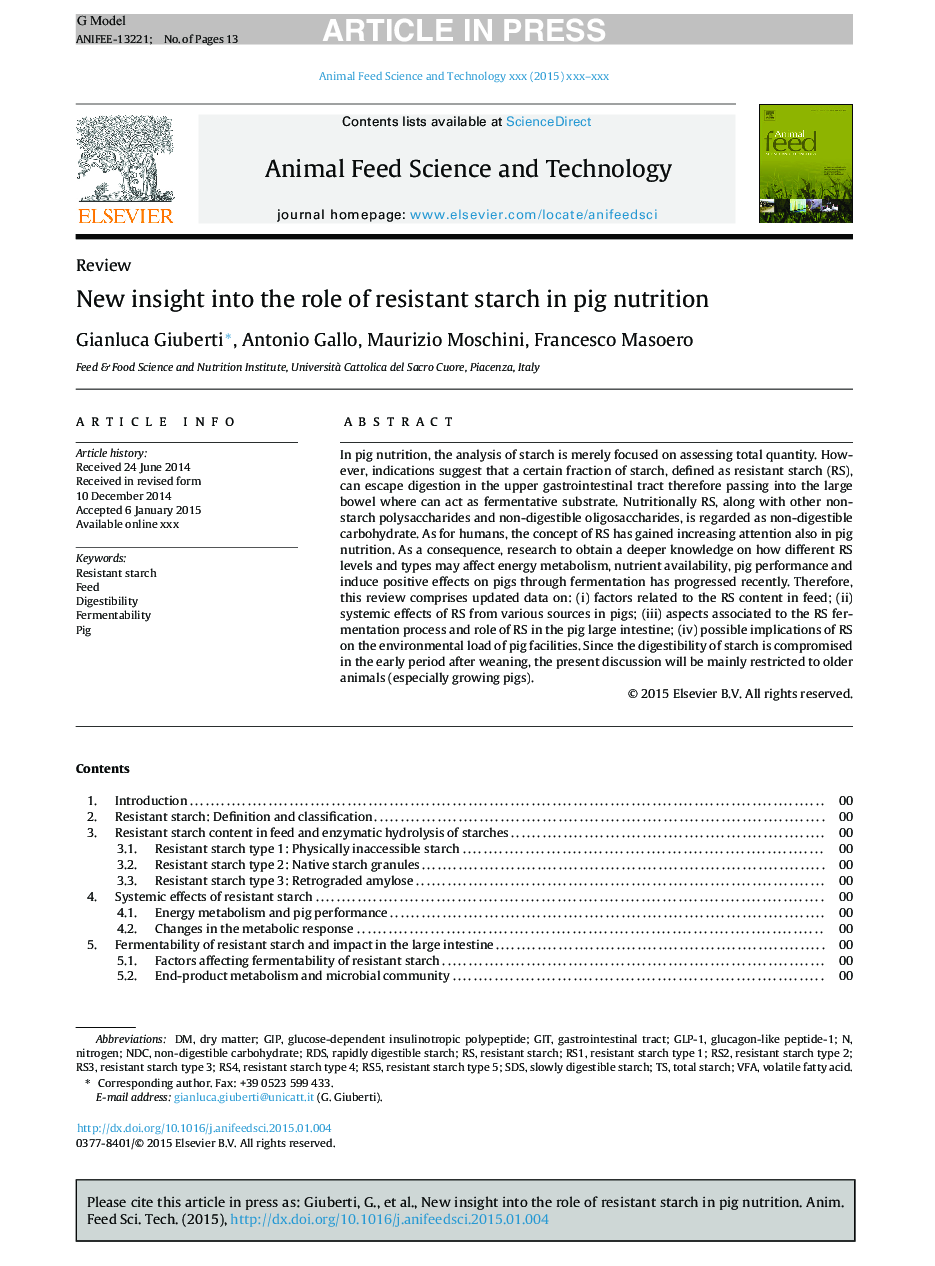| Article ID | Journal | Published Year | Pages | File Type |
|---|---|---|---|---|
| 8491374 | Animal Feed Science and Technology | 2015 | 13 Pages |
Abstract
In pig nutrition, the analysis of starch is merely focused on assessing total quantity. However, indications suggest that a certain fraction of starch, defined as resistant starch (RS), can escape digestion in the upper gastrointestinal tract therefore passing into the large bowel where can act as fermentative substrate. Nutritionally RS, along with other non-starch polysaccharides and non-digestible oligosaccharides, is regarded as non-digestible carbohydrate. As for humans, the concept of RS has gained increasing attention also in pig nutrition. As a consequence, research to obtain a deeper knowledge on how different RS levels and types may affect energy metabolism, nutrient availability, pig performance and induce positive effects on pigs through fermentation has progressed recently. Therefore, this review comprises updated data on: (i) factors related to the RS content in feed; (ii) systemic effects of RS from various sources in pigs; (iii) aspects associated to the RS fermentation process and role of RS in the pig large intestine; (iv) possible implications of RS on the environmental load of pig facilities. Since the digestibility of starch is compromised in the early period after weaning, the present discussion will be mainly restricted to older animals (especially growing pigs).
Keywords
Related Topics
Life Sciences
Agricultural and Biological Sciences
Animal Science and Zoology
Authors
Gianluca Giuberti, Antonio Gallo, Maurizio Moschini, Francesco Masoero,
